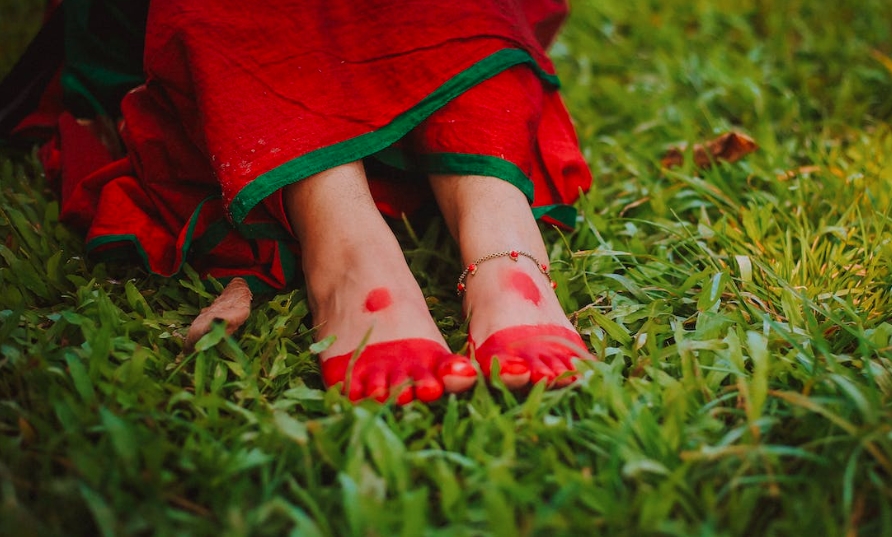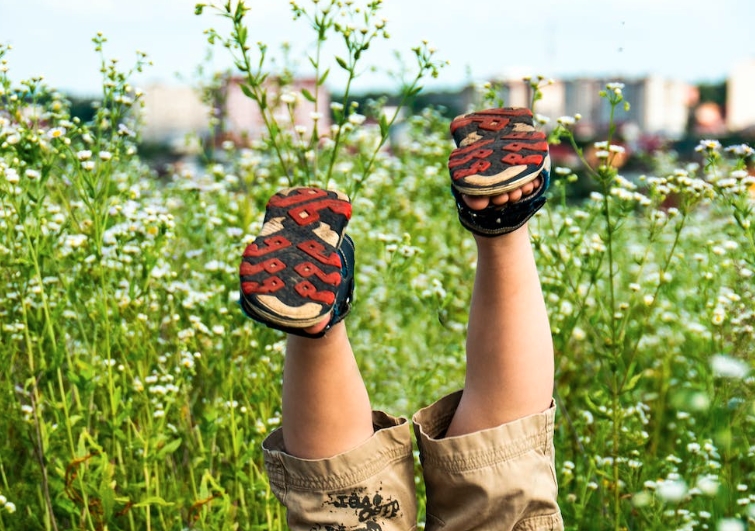Square foot gardening is a type of gardening method that involves dividing the growing area into small, one-foot-square sections. This type of gardening was first developed in the 1970s by Mel Bartholomew, an American television presenter and author. The purpose of this type of gardening is to maximize the production of a garden while minimizing the amount of space used. The main benefit of square foot gardening is that it reduces the amount of time and effort required to maintain a garden. It also reduces the amount of soil needed, as the soil in each square is only used for the plants that are grown in it.
Square foot gardening can be used to grow a variety of vegetables, fruits, herbs and flowers. The method requires careful planning and the use of quality soil and compost. This type of gardening also requires a detailed knowledge of the plants that are being grown and their specific requirements for sunlight, water and nutrients. In addition, square foot gardening also requires that the soil is kept in a loose and aerated condition, as this will help to ensure that the plants receive the necessary oxygen, moisture and nutrients. This type of gardening is an excellent choice for those who want to save space and produce a lot of food from a small area, as it eliminates the need for large and expensive gardening tools and equipment.
How to Get Started with Square Foot Gardening:
Site Selection and Preparation
Before beginning a square foot garden, it is important to select an ideal location for the garden and prepare the site for planting. Choose a site that gets at least six hours of direct sunlight each day and has access to water. Clear any debris from the site and remove any weeds or grass. Make sure the surface is level and well-drained. If necessary, use soil amendments such as compost or manure to improve the soil structure.

Materials Needed for Square Foot Gardening
To properly construct a square foot garden, you will need several materials. Start with a frame of wood or metal that will hold the soil in place. The frame should be no more than four feet wide and four feet long, and should be at least six inches deep. You will also need soil, compost, and mulch. Additionally, you will need access to water and a selection of plants and seeds to fill the garden.
Building a Square Foot Garden Box
Once the site is prepared and you have gathered all the necessary materials, you can begin building your square foot garden box. Start by constructing the frame, using either wood or metal. Make sure the frame is level and secure it with screws or nails. Fill the frame with soil, compost, and mulch, and then water the soil until it is damp.
Planning a Square Foot Garden
Now that you have constructed the garden box, it is time to plan the square foot garden. Start by deciding what types of plants you would like to grow. Consider the amount of sunlight, water, and soil the plants will need. Then, determine the best way to arrange the plants in the square foot garden. Once you have settled on a design, you can begin planting your garden!
Planting in Square Foot Gardens:
Plant Spacing and Layout: The key to successful square foot gardening is proper plant spacing and layout. The basic rule of thumb is to space plants 1 foot apart. This allows for adequate air circulation and sunlight penetration. Additionally, some plants require more space than others, and this should be taken into consideration when planning your garden. For example, vining plants such as cucumbers, squash, and melons should be planted in 2×2 or 2×3 foot blocks, while smaller plants such as lettuce, spinach and herbs can be planted in 1×1 foot squares.
Choosing Plants Suitable for Square Foot Gardening: Since space is limited in square foot gardens, it is important to choose plants that are suitable for the size of the garden. Some plants that are commonly grown in square foot gardens include tomatoes, peppers, beans, lettuce, spinach, herbs and some varieties of squash. It is also important to consider the climate of your area when selecting plants. For example, some plants such as tomatoes and peppers require a lot of heat to produce fruit, and may not be suitable for cooler climates.
Crop Rotation and Succession Planting: Crop rotation and succession planting are important components of square foot gardening. Crop rotation involves planting different crops in the same area each season to reduce the buildup of pests and diseases. Succession planting involves planting a small number of seeds in the same area several times throughout the season. This can help to maximize yield and reduce pest and disease problems.
Companion Planting in Square Foot Gardening: Companion planting is the practice of planting different plants together in order to achieve certain benefits. For example, some plants can help to repel pests, while others can help to add nutrients to the soil. Additionally, some plants can help to shade other plants and protect them from the heat of the sun. When companion planting in a square foot garden, it is important to consider the size of the plants and the amount of sunlight they need. Additionally, it is important to ensure that plants are not competing for resources such as water and nutrients.
Soil Preparation and Maintenance:
Soil composition and fertility for square foot gardening is an important factor for successful gardening. To ensure healthy plants, it is important to have a soil that contains necessary nutrients and has a good structure. The best soil for square foot gardening is a mix of compost, topsoil, and peat moss. This mix should provide optimal aeration, moisture retention, and nutrient availability.
Adding amendments and fertilizers to the soil is also important for square foot gardening. Fertilizers provide additional nutrients for the plants and help them to thrive. Organic amendments, such as compost, manure, and bone meal, can be added to the soil to provide additional nutrients. Synthetic fertilizers can also be used to supplement the soil with additional nutrients.
Irrigation and drainage in square foot gardening is essential for successful plant growth. It is important to provide adequate water to the plants without overwatering them. This can be achieved by using a drip irrigation system or installing a soaker hose. It is also important to ensure that the soil has good drainage so that excess water can be removed.
Pest and disease management in square foot gardening is also important. Pests and diseases can cause significant damage to plants and can reduce yields. It is important to use integrated pest management techniques to prevent pests and diseases from taking hold. This can include using beneficial insects such as ladybugs and lacewings to control pests, as well as using organic pesticides and fungicides to prevent diseases from spreading.
Square Foot Garden Design and Layout:
Maximizing Space in Square Foot Gardening:
Square foot gardening is a great way to maximize space in a garden, as it involves dividing a garden into smaller sections and utilizing every inch of space. This type of gardening allows for higher crop yields and makes it easier to manage the garden. To maximize the space, gardeners may use vertical gardening techniques, such as trellises, supports, and other features. Vertical gardening involves growing plants up instead of out, thus utilizing the vertical space in the garden. This technique also makes it easier to access the plants and reach for harvesting. Additionally, gardeners can also use specific square foot gardening tools that allow for accurate measurements and more efficient planting.
Vertical Gardening in Square Foot Gardening:
Vertical gardening is an important aspect of square foot gardening as it involves utilizing the vertical space in a garden. This can be accomplished by using trellises, stakes, and other supports for plants. This makes the garden look more organized and makes harvesting easier. Additionally, vertical gardening allows for more efficient use of space, as plants can be stacked on top of each other and still receive adequate sunlight and water. This type of gardening also allows for the use of smaller containers, which can help to conserve water. Finally, vertical gardening adds a visual element to the garden, as the different heights of plants can create an interesting landscape.
Trellises, Supports, and Other Features for Square Foot Gardening:
Trellises, stakes, and other supports are important for square foot gardening as they provide support for plants and also keep the garden organized. Trellises and stakes can be used to support climbing plants, such as tomatoes and cucumbers, while other supports can be used for plants that require more stability, such as squash. Additionally, trellises and stakes can also be used to separate different types of plants, which can help to keep the garden organized and make it easier to access the plants. Finally, trellises and other supports can also be used to create an aesthetically pleasing garden design.
Incorporating Aesthetics into Square Foot Garden Design:
Incorporating aesthetics into square foot garden design is an important part of creating a successful garden. This can be accomplished by using different types of plants, such as flowers, herbs, and vegetables, in different colors and shapes. Additionally, gardeners can also use different materials, such as wood, stone, and metal, to create interesting patterns and designs in the garden. Finally, trellises, stakes, and other supports can be used to create an interesting landscape and add height to the garden. By using these different elements, gardeners can create a unique and aesthetically pleasing square foot garden design.
Harvesting and Preserving Your Square Foot Garden:
Knowing when to Harvest in Square Foot Gardening:
The best time to harvest fruits and vegetables from your square foot garden is when they are fully ripe. This will ensure that you get the most out of the produce. Fruits and vegetables that are harvested too early may not have the best flavor, texture, and nutritional value. It is important to check the size, color, and texture of the produce before harvesting. Also, make sure to look for any signs of insect damage or disease. Once the produce is ready to be harvested, it should be picked carefully and promptly.
Preserving and Storing the Harvest:
Once the harvest is complete, the next step is to preserve and store the produce. This can be done through a variety of methods, such as drying, canning, freezing, and pickling. Drying or dehydrating is best used for herbs and certain fruits and vegetables, while canning and freezing are best for preserving vegetables, fruits, and sauces. Pickling is also a great way to preserve vegetables and fruits as it preserves the flavor and texture.
Seed Saving in Square Foot Gardening:
Seed saving is a great way to ensure that your square foot garden will produce the same delicious fruits and vegetables year after year. This can be done by harvesting the seeds from the fruits and vegetables that have been harvested. The seeds should be stored in a cool, dry place until they are ready to be planted in the spring. If done properly, the seeds can be saved for up to five years. It is important to label the seeds with the type of plant, the date of harvest, and any other relevant information.
Common Mistakes in Square Foot Gardening:
One of the most common mistakes made in square foot gardening is not having the right soil mixture. It is important to have a mixture of at least one-third compost and two-thirds soil for the best results. Compost is essential for providing vital nutrients to plants, as well as for improving the texture of the soil. It is also important to use soil that is well-draining, such as a sandy loam. If the soil is too heavy, it can compact and hinder root growth.
Another common mistake is not spacing the plants correctly. When planning a square foot garden, it is important to remember that plants need room to grow. Crowding plants can cause them to compete for nutrients, water, and sunlight, which can lead to poor growth and poor yields. It is also important to make sure that the plants are planted in the right location so they receive the right amount of sunlight.
Troubleshooting Common Issues in Square Foot Gardening
One of the most common issues in square foot gardening is poor drainage. If the soil is too heavy or has too much organic matter, it can become waterlogged and can lead to root rot and other diseases. To avoid this, it is important to make sure the soil mixture is well aerated and well draining. If the soil is too clay-like, it may need to be amended with compost or sand.
Another issue is weeds. Weeds can quickly take over a square foot garden, and can out-compete the plants for nutrients and water. To prevent this, it is important to use a thick layer of mulch, such as grass clippings or straw, to prevent weed seeds from germinating. It is also important to regularly pull any weeds that do appear.
Tips for Beginners in Square Foot Gardening
If you are just getting started with square foot gardening, it is important to plan your garden before you start planting. Decide which vegetables and herbs you want to grow, and create a plan for where they should go. Make sure you leave enough space between the plants, and consider their light and water needs.
It is also important to use the right soil mixture. As mentioned before, a mixture of one-third compost and two-thirds soil is ideal for square foot gardening. The compost will provide vital nutrients to the plants, and will improve the texture of the soil.
Finally, it is important to keep up with regular maintenance. This includes weeding, watering, and fertilizing. Weeding is essential for preventing weeds from taking over your garden, and regular watering is essential for keeping plants healthy and preventing wilting. Fertilizing is also important for providing the necessary nutrients for optimal growth.
Inspirational Square Foot Garden Designs:
Pictures and descriptions of various square foot garden designs
Square foot gardens are a great way to make use of small spaces, such as patios, balconies, decks, and other areas with limited space. They can be customized to fit any space, and can include a variety of plants, herbs, and vegetables. Pictures and descriptions of different square foot garden designs can help you find the perfect design for your own space. From raised beds to containers and vertical gardens, there are a variety of designs to choose from, each with their own unique look and feel.

Examples of square foot garden designs for different spaces
A square foot garden can be tailored to fit any space, no matter how small. For larger areas, raised beds can be used to create a more traditional look, while still making use of limited space. For smaller areas, container gardens can be used to create a unique and eye-catching display. Vertical gardens are also a great way to add interest to a smaller space, while still providing plenty of growing space. No matter what size your space is, there is a square foot garden design that will work for you.
Tips for creating your own unique square foot garden design
Creating a unique square foot garden design is all about finding the right balance of elements. Think about the overall look and feel you want to create, and what plants and materials will work best for your space. Consider the amount of light the space receives, and the amount of time you have to devote to the garden. Choose plants that will thrive in your space, and be sure to give them enough space to grow. Finally, don’t be afraid to get creative and express yourself.
Before and after photos of square foot garden transformations
Before and after photos of square foot garden transformations can be a great way to inspire your own design. Seeing the transformation of a small, barren space into a lush oasis can be incredibly motivating. It can also help you get an idea of what is possible with a square foot garden and give you the courage to try something new. From humble beginnings to incredible results, these before and after photos can help you find the perfect design for your own space.
Conclusion
Overall, Square Foot Gardening offers numerous benefits for those who want to grow their own food. It utilizes space efficiently, reduces water usage, and allows for a greater variety of plants to be grown. Additionally, it encourages healthy soil, discourages pests, and simplifies the process of growing food. This method of gardening is easy to learn and requires minimal cost, making it an ideal choice for those who want to start gardening without spending a fortune. The simple layout and raised beds of Square Foot Gardening are both aesthetically pleasing and practical, allowing gardeners to easily tend to their plants. Square Foot Gardening is a great way to enjoy the benefits of gardening without the hassle and expense of traditional gardening. It is the perfect solution for those who want to get the most out of their gardening experience.
FAQs
1. What is Square Foot Gardening?
Square Foot Gardening is a popular gardening technique that divides a garden into small, one-foot sections, allowing gardeners to maximize the use of their space and resources. The technique was popularized by Mel Bartholomew in his book, All New Square Foot Gardening.
2. What are the benefits of Square Foot Gardening?
Square Foot Gardening has many benefits, including the ability to grow a large number of plants in a limited space, saving time and resources, and creating an efficient garden layout. Additionally, the technique helps to reduce weeds, conserve water, and improve soil structure.
3. How do I start a Square Foot Garden?
To start a Square Foot Garden, you will need to build or purchase a raised bed, prepare the soil, choose your plants, and label your garden. Additionally, you will need to fertilize and water your garden regularly.
4. How do I determine how much space I need for my Square Foot Garden?
To determine how much space you need for your Square Foot Garden, you will need to calculate the number of square feet required for each plant, factoring in the number of plants you wish to grow, the size of the bed, and the spacing between each plant.
5. What type of soil is best for Square Foot Gardening?
The best soil for Square Foot Gardening is a blend of compost, peat moss, and vermiculite. The soil should be light and fluffy, and should have a pH of 6.5-7.0.
6. How often should I water my Square Foot Garden?
The frequency of watering will depend on the weather, your soil type, and the plants you are growing. Generally, your Square Foot Garden should be watered two to three times per week.
7. What are the best plants for Square Foot Gardening?
The best plants for Square Foot Gardening are those that grow well in small spaces, such as herbs, tomatoes, peppers, cucumbers, squash, and lettuces.
8. How do I care for my Square Foot Garden?
To care for your Square Foot Garden, you will need to water and fertilize regularly, weed regularly, and mulch to conserve water. Additionally, you may need to support tall plants, such as tomatoes, and prune plants to improve air circulation.
9. What pests and diseases should I look out for in my Square Foot Garden?
Common pests and diseases in a Square Foot Garden include aphids, caterpillars, powdery mildew, and blossom end rot. To prevent and control pests and diseases, you should practice good gardening habits, such as removing diseased plants and using pest-control products.
10. What are some tips for maximizing the productivity of my Square Foot Garden?
To maximize the productivity of your Square Foot Garden, you should plant in succession, rotate crops each season, and practice Companion Planting. Additionally, you should take advantage of vertical space by using trellises and stakes, and you should practice soil-saving techniques such as mulching.


















